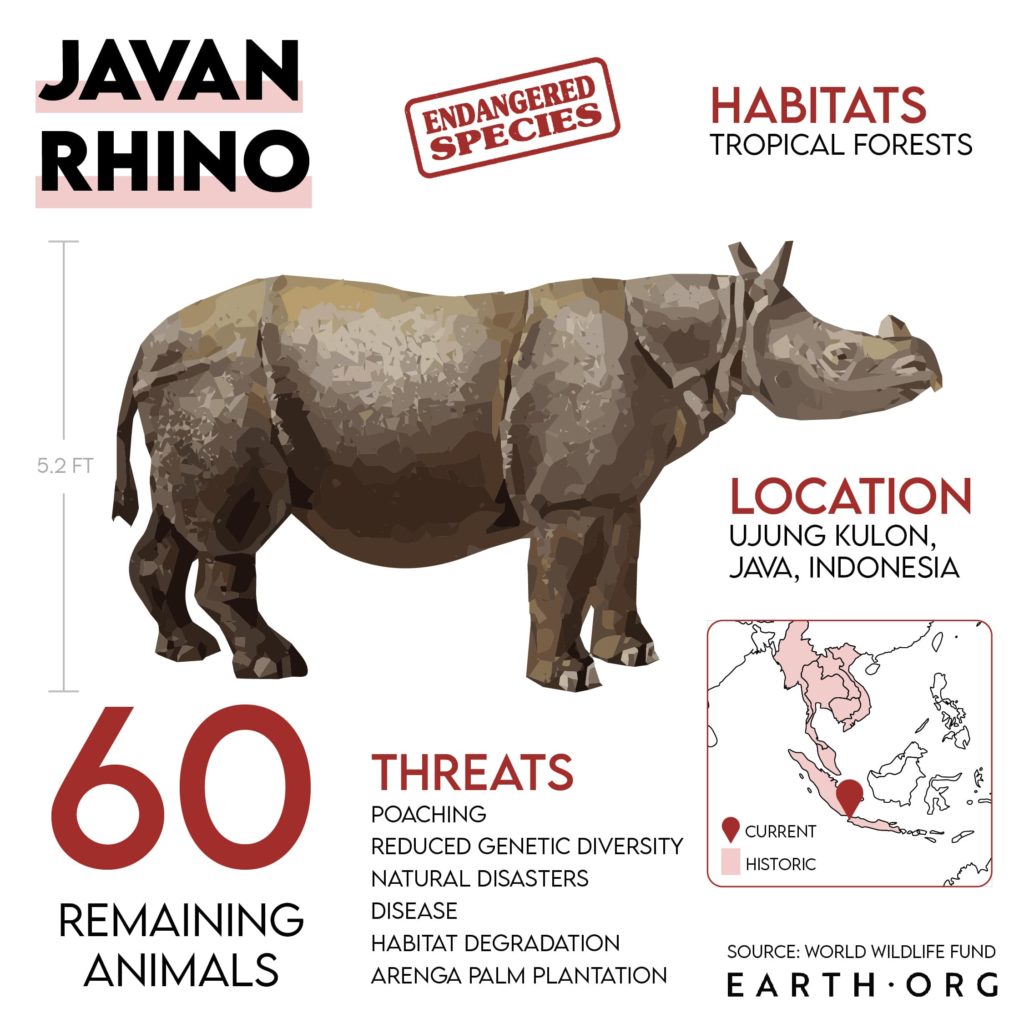Over the past few centuries, human activity including deforestation and urbanisation as well as climate change have forced hundreds of species into extinction, with tens of thousands more are currently on the brink of going extinct. But how many endangered species are there right now?
—
Nature and our planet’s biodiversity are currently under overwhelming stress due to centuries of widespread human activities and climate change. Deforestation and land clearing for agricultural and farming purposes are the biggest threats to animal and plant species across the world, reducing millions of hectares of natural habitats every year.
Within the last 500 years, human activity has forced more than 800 species into extinction. About 65 species are only found in captivity or in cultivation. The UK alone was recently revealed to have lost nearly half of the country’s wildlife and plant species since the Industrial Revolution.
As the world continues its current trend of environmental degradation, we have driven another 1 million animal and plant species to the brink of extinction, all of which could disappear from the Earth within decades, according to the UN’s 2019 Global Assessment Report on Biodiversity and Ecosystem Service.
This devastating rate of extinction highlights the fact we’re in the midst of a sixth mass extinction event, and worryingly, it’s accelerating. Scientists warn that without the human destruction of nature, this rate of loss would have taken thousands of years.
Some species are more vulnerable to extinction than others, and have already dwindled down to shockingly low numbers.
How Many Endangered Species Are There?
There are currently at least 38,500 species under threat, and over 16,300 species believed to be endangered, according to the International Union for Conservation of Nature (IUCN), the world’s most comprehensive information source on the global conservation status of animal, fungi and plant species.
Based on only 28% of all assessed species, 41% of known endangered species are amphibians, 37% are sharks and rays, 33% are corals, 26% are mammals, and 14% are birds.
Up to 70% of the world’s assessed plants are under threat, and nearly a third of global tree species are facing extinction including well-known species such as magnolias, oaks, maple and ebonies.
In the US alone, the Environmental Protection Agency estimates there are currently over 1,300 endangered or threatened species.

While it’s difficult to pinpoint the exact number of endangered species, it’s undeniable that the rate of extinction is accelerating at unprecedented rates. We are losing the same amount of species within 20 years as we did over the whole of the last century.
In a 2020 analysis published in the journal Proceedings of the National Academy of Sciences, scientists have identified 515 species with populations below 1,000 and about half of these had fewer than 250 individuals remaining. There are also 388 species of land vertebrates with populations under 5,000 individuals, 84% of them live in the same regions as the species with populations under 1,000, creating the conditions for a domino effect where close ecological interactions of species on the brink tend to move other species towards extinction.
You might also like: 12 of the Most Endangered Animals in the World
What Can We Do?
As forests are home to more than 80% of all terrestrial species of animals, plants and insects, it is crucial we halt and reverse deforestation in order to restore and protect the world’s animal and plant species. Currently, global demand for beef is responsible for 41% of deforestation around the world. By switching to a plant-based diet, deforestation rates would drop significantly, allowing natural habitats to recover and thrive once again.
Likewise, 10 species provide about 30% marine capture fisheries and another 10 species provide about 50% of aquaculture production. By lowering the demand for fish and reducing the rate of by-catch at the same time, marine species will be able to repopulate. This has already proven to be successful. According to the IUCN, four commercially-fished tuna species have shown signs of population recovery in 2021 following a decade of enforcement of regional fishing quotas.
Illicit poaching and wildlife trafficking remain huge threats to biodiversity and animal species to this day, with nearly 7,000 species of animals and plants reported in illegal trade involving 120 countries. While far stricter enforcement and conservation efforts has already helped many historically poached species to recover, and we must continue these efforts before we lose any more important species.


















